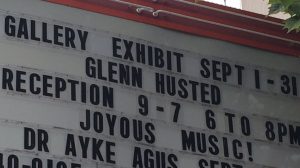
On Thursday September 7, 2017 the Glenn Husted Free Art Reception Show and Sale featured its opening night at The Theater Gallery on Plumas Street in Yuba City. This was a collaborative art gallery exhibit showcasing a multitude of artist’s work including several paintings, a wide range of ceramic pieces, hand-made jewelry and a few glasswork pieces.
The showing’s opening night had a great turnout and the small room was bustling with people throughout the evening.
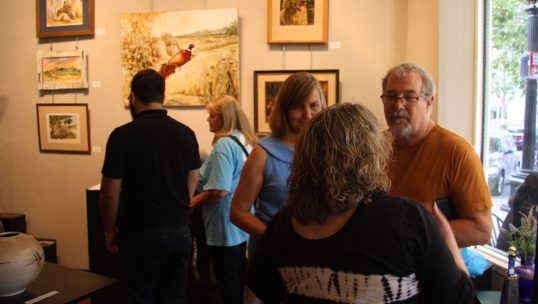
Over the course of the night, the showcased pieces for sale were quickly being sold to patrons of a wide variety, from previous students of Mr. Husted to others who simply appreciate the artform.
For ceramic instructor Glenn Husted, this included around 25 pieces; some that he made very recently (one vase which was made this semester in one of his ceramic classes) and others that he has created over the years, some from all the way back in 2003.
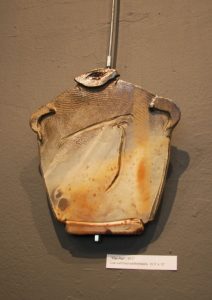
He spoke about his decisions in choosing these pieces for the gallery. “I think that they all look good together,” he said with a smile. Any time he is asked a question about ceramics, whether or not it be about his work specifically, he is always enthusiastic about his response.The pieces created a cohesive showing in which Husted’s style was very evident while still showing diversity.
Many of these pieces feature an iconic mark that is distinctly a sort of “Husted brand.” Usually these marks are drawn into or on the clay in an organic way– unplanned, sporadic, and natural to the way that his hand moves.
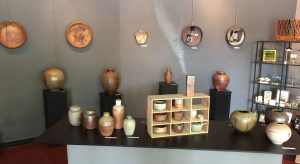
Often, Husted uses the word archaic when talking about ceramics, which can be visibly recognised throughout the majority of his work. He uses this word in reference to not only the history of the way in which ceramics has evolved, but the style that he likes his artwork to have as well.
In the process of making ceramic art and designing the aesthetic of the piece, there are several different elements that can be involved: marks on the surface of the clay, marks made with underglazes or oxides, and the design of the glaze itself, whether that be the actual application or simply the color.
The four circular ceramic pieces that hung on the wall had a very intriguing artistic aesthetic. The style of these four in particular had prompted me to ask what the inspiration behind them was.“They were inspired by my desire to explore my more artistic side.” says Husted.
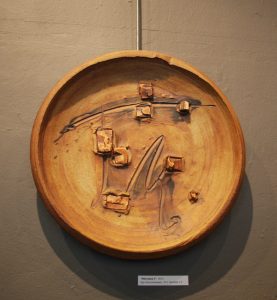
Ceramics, as we might assume, is one of the more practical artforms; making pots and bowls is more focused on the functionality of the pieces rather than other artwork forms, such as paintings, which are made for visual satisfaction. Husted’s hanging wall pieces explore the less physically useful aspect of ceramic art and dive into its more visually interesting element.
“The ones on the wall were glaze fired.” Husted explained. This is a different kind of firing than the others recieved– a process called wood firing. In contrast to gas firing, wood firing gives each pot a very unique look and shows markings of where the flames actually touch the piece. Beautiful and unusual markings come from wood firing and the whole process holds true to something that Husted often says in his ceramics classes: sometimes ceramics can be unpredictable; you never know what might come out of the kiln.
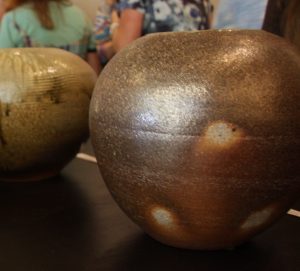
The wall pieces that were glaze fired are explained by Husted to come out of the kiln “drastically different than the wood fired.” These tend to be more uniform than wood fired pots.
On the left we can see a pot that shows markings that result from wood firing. The white spots on the pot’s side come from the flames that touch the surface of the clay as it gets fired in the kiln.
Glenn Husted continues to create and teach ceramics at Yuba College. To find more upcoming events like this one, check the Yuba Sutter Arts website at yubasutterarts.org.
Note: this article was featured in the Fall 2017 print edition of The Prospector.
Comment Policy: Comments are welcomed and encouraged. However, the editorial board reserves the right to edit or delete, without notice, any comments submitted to the blog. For more details, see our full Comment Policy.